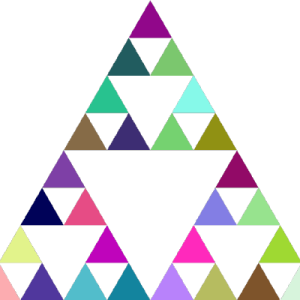Presented by:

Nathalie Carrié
[My profile on Linkedin, experiences and diploma @nathalierun](https://www.linkedin.com/in/nathalierun/)
[Je me présente](https://nathalierun.net/Je-me-presente.html)
[My Twitter account @nathrune](https://twitter.com/nathalierun)
[Math in class in pictures](https://nathalierun.net/lycee/piwigo/)
[My research papers in mathematics and computer science teaching](https://irem.univ-reunion.fr/spip.php?auteur8)
Slides
This talk concerns a branch of mathematics, linear algebra. I have started a Snap! project of matrix calculus and by chance, while testing my blocks, I came across a result of linear algebra apparently unknown today, result that can simply be proven.
I will first make a simple foray through the APL library, giving concrete examples that can be used by our students of the terminal cycle of the second degree and students of the first 2 years of university following a mathematical curriculum.
We will look at how to quickly generate matrices with the APL library, the basis of the matrix computation needed to study linear applications in algebra.
We will then detail each block of the matrix calculation project that we created, coefficient extracted from a matrix, cofactors, trace, determinant.
We will then present the linear algebra result that we discovered by chance, and its proof.
Summary
First, a few how to
- How to generate the identity matrix of size n
- How to generate a random matrix
- How to compute the trace of a matrix using the power of the map block: 2 ways to calculate the trace: 1. old school 2. with the map block
- How to extract the a_i,j coefficient from an A matrix
- How to select a row or column in a matrix A
- How to get the cofactor matrix of a given matrix
- How to compute the determinant of a given matrix using a recursive formula
- How to get the inverse of a matrix
Conjecture on square matrices of order n of natural integers from 1 to n2
- How to generate this square matrix
- Calculation of the determinant of this square matrix for n in {3, 4, 5, 6, 7}
Conclusion
- Theorem: As soon as n≥3, the determinant of the square matrix of order n whose coefficients are the integers from 1 to n2 (in the natural order) is equal to zero.
- Very short proof of the statement.
Everything will be detailed on slides and in a very progressive way so that everyone can access the understanding of the current calculation, especially students.
The aim is for this work to be continued and deepened.
In this presentation, I want to highlight how much Snap! can be useful to do mathematical computations, especially now that the APL library is available.
You can refer to the Wikipedia's page on the subject to see some definitions.
- Date:
- 2021 July 29 - 11:30 PST
- Duration:
- 5 min
- Room:
- Plenary
- Conference:
- Snap!Con 2021
- Type:
- Lightning Talk
- Track:
- Lightning Talks